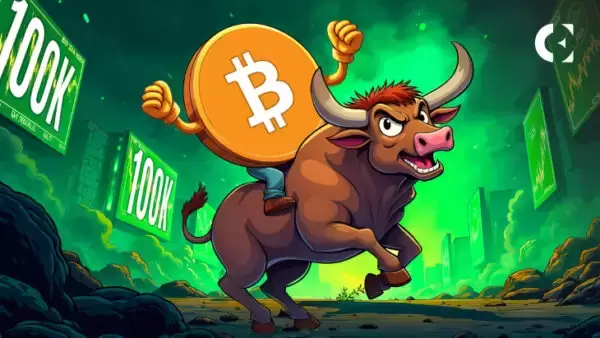 |
|
 |
|
 |
|
 |
|
 |
|
 |
|
 |
|
 |
|
 |
|
 |
|
 |
|
 |
|
 |
|
 |
|
 |
|
Cryptocurrency News Articles
Introducing the Crypto Project Lifecycle Roadmap
Mar 30, 2025 at 10:06 am
This article explores how to retain token holders by building a community and giving them a reason to stay.

Written by Saurabh Deshpande
Compiled by: Luffy, Foresight News
Compiled by: Luffy, Foresight News
I recently used stablecoin supply as a measure of liquidity, combining it with the number of tokens in the market, to try and figure out the liquidity of each asset. As expected, we saw liquidity converging to zero, and the chart we get from this analysis is a piece of art.
I recently used stablecoin supply as a measure of liquidity, combining it with the number of tokens in the market, to try and figure out the liquidity of each asset. As expected, we saw liquidity converging to zero, and the chart we get from this analysis is a piece of art.
Each cryptocurrency will enjoy roughly $1.8 million in stablecoin liquidity by March 2021, but this will reduce to $5,500 by March 2025.
Each cryptocurrency will enjoy roughly $1.8 million in stablecoin liquidity by March 2021, but this will reduce to $5,500 by March 2025.
As a project, you have to compete with 40 million other tokens for the attention of users and investors. Three years ago, there were only 5 million. So how do you keep token holders interested? You can try to build a community, let members say “GM” on Discord, and do some airdrop activity.
As a project, you have to compete with 40 million other tokens for the attention of users and investors. Three years ago, there were only 5 million. So how do you keep token holders interested? You can try to build a community, let members say “GM” on Discord, and do some airdrop activity.
But then what? Once they get the tokens, they move on to the next Discord group and say “GM.”
But then what? Once they get the tokens, they move on to the next Discord group and say “GM.”
Community members won’t stay without a reason, you need to give them something to stay for. In my opinion, a high-quality product with actual cash flow is the reason, or it makes the project data look good.
Community members won’t stay without a reason, you need to give them something to stay for. In my opinion, a high-quality product with actual cash flow is the reason, or it makes the project data look good.
Russ Hanneman syndrome
Russ Haneman Syndrome
In the American TV series Silicon Valley, Russ Hanneman once boasted that he would become a billionaire by “moving radio to the Internet.” In the field of crypto, everyone wants to be Russ, chasing overnight wealth, but does not care about business fundamentals, building moats, and obtaining sustainable income, which are “boring” but practical issues.
In the American TV series Silicon Valley, Russ Hanneman once boasted that he would become a billionaire by “moving radio to the Internet.” In the field of crypto, everyone wants to be Russ, chasing overnight wealth, but does not care about business fundamentals, building moats, and obtaining sustainable income, which are “boring” but practical issues.
Joel’s recent articles, “Death to Stagnation” and “Make Revenue Great Again,” highlight the urgent need for crypto projects to focus on sustainable value creation. Much like the memorable scene in the show where Russ Hanneman dismisses Richard Hendricks’ concerns about building a sustainable revenue model, many crypto projects also rely on speculative narratives and investor enthusiasm. Now it seems clear that this strategy is unsustainable.
Joel’s recent articles, “Death to Stagnation” and “Make Revenue Great Again,” highlight the urgent need for crypto projects to focus on sustainable value creation. Much like the memorable scene in the show where Russ Hanneman dismisses Richard Hendricks’ concerns about building a sustainable revenue model, many crypto projects also rely on speculative narratives and investor enthusiasm. Now it seems clear that this strategy is unsustainable.
But unlike Russ, founders can’t just shout “Tres Comas” (Russ’s phrase for showing off his wealth in the show) to make the project successful. Most projects need sustainable income, and to achieve this, we first need to understand how the current projects with income do it.
But unlike Russ, founders can’t just shout “Tres Comas” (Russ’s phrase for showing off his wealth in the show) to make the project successful. Most projects need sustainable income, and to achieve this, we first need to understand how the current projects with income do it.
In traditional markets, regulators maintain liquidity of tradable stocks by setting high thresholds for listed companies. There are 359 million companies in the world, but only about 55,000 are publicly listed, accounting for about 0.01%. The advantage of this is that most of the available funds are concentrated in a limited range. But it also means that investors have fewer opportunities to bet on companies early and chase high returns.
In traditional markets, regulators maintain liquidity of tradable stocks by setting high thresholds for listed companies. There are 359 million companies in the world, but only about 55,000 are publicly listed, accounting for about 0.01%. The advantage of this is that most of the available funds are concentrated in a limited range. But it also means that investors have fewer opportunities to bet on companies early and chase high returns.
Dispersion of attention and liquidity is the price to pay for all tokens to be easily and publicly traded. I am not here to judge which model is better, I am simply showing the difference between the two worlds.
Dispersion of attention and liquidity is the price to pay for all tokens to be easily and publicly traded. I am not here to judge which model is better, I am simply showing the difference between the two worlds.
The question is, how do you stand out in a seemingly endless sea of tokens? One way is to show that there is demand for the project you are building and to allow token holders to participate in the growth of the project. Don’t get me wrong, not every project has to be equally obsessed with maximizing revenue and profits.
The question is, how do you stand out in a seemingly endless sea of tokens? One way is to show that there is demand for the project you are building and to allow token holders to participate in the growth of the project. Don’t get me wrong, not every project has to be equally obsessed with maximizing revenue and profits.
Revenue is not an end, but a means to achieve long-term vitality.
Revenue is not an end, but a means to achieve long-term vitality.
For example, an L1 that hosts enough applications only needs to earn enough fees to offset token inflation. Ethereum’s validator yield is about 3.5%, which means that its token supply will increase by 3.5% each year. Any holder who stakes ETH to earn returns will have their tokens diluted. But if Ethereum destroys the same amount of tokens through a fee burning mechanism, then the ETH of ordinary holders will not be diluted.
For example, an L1 that hosts enough applications only needs to earn enough fees to offset token inflation. Ethereum’s validator yield is about 3.5%, which means that its token supply will increase by 3.5% each year. Any holder who stakes ETH to earn returns will have their tokens diluted. But if Ethereum destroys the same amount of tokens through a fee burning mechanism, then the ETH of ordinary holders will not be diluted.
As a project, Ethereum does not need to be profitable because it already has a thriving ecosystem. As long as validators can earn enough to keep the nodes running, Ethereum can do without additional income. But this is not the case for projects with a token circulation rate (the percentage of circulating tokens) of around 20%. These projects are more like traditional companies and it may take time to reach a state where there are enough volunteers to keep the project running.
As a project, Ethereum does not need to be profitable because it already has a thriving ecosystem. As long as validators can earn enough to keep the nodes running, Ethereum can do without additional income. But this is not the case for projects with a token circulation rate (the percentage of circulating tokens) of around 20%. These projects are more like traditional companies and it may take time to reach a state where there are enough volunteers to keep the project running.
Founders must face the reality that Russ Hanneman ignored. Generating real, sustained revenue is essential. It should be noted that in this article, whenever I mention “revenue,” I actually mean free cash flow (FCF), because for most crypto projects, the data behind revenue is difficult to obtain.
Founders must face the reality that Russ Hanneman ignored. Generating real, sustained revenue is essential. It should be noted that in this article, whenever I mention “revenue,” I actually mean free cash flow (FCF), because for most crypto projects, the data behind revenue is difficult to obtain.
Understanding how to allocate FCF, such as when to reinvest it for growth, when to share it with token holders, and the best way to allocate it (such as buybacks or dividends), can easily make the difference between success and failure for founders aiming to create lasting value.
Understanding how to allocate FCF, such as when to reinvest it for growth, when to share it with token holders, and the best way to allocate it (such as buybacks or dividends), can easily make the difference between success and failure for founders aiming to create lasting value.
Equity market reference is helpful in making these decisions effectively. Traditional companies often distribute FCF through dividends and buybacks. Factors such as company
Equity market reference is helpful in making these decisions effectively. Traditional companies often distribute FCF through dividends and buybacks. Factors such as company
Disclaimer:info@kdj.com
The information provided is not trading advice. kdj.com does not assume any responsibility for any investments made based on the information provided in this article. Cryptocurrencies are highly volatile and it is highly recommended that you invest with caution after thorough research!
If you believe that the content used on this website infringes your copyright, please contact us immediately (info@kdj.com) and we will delete it promptly.
-

- As the broader market undergoes a sharp selloff, the XRP price has taken a significant hit.
- Apr 01, 2025 at 05:25 pm
- With its rapid growth and growing investor interest, many experts believe INTL could not only outperform the XRP price but potentially mirror the kind of breakout success seen with Toncoin (TON) in its early days.
-

-

-

-

-

-

-

-



























































